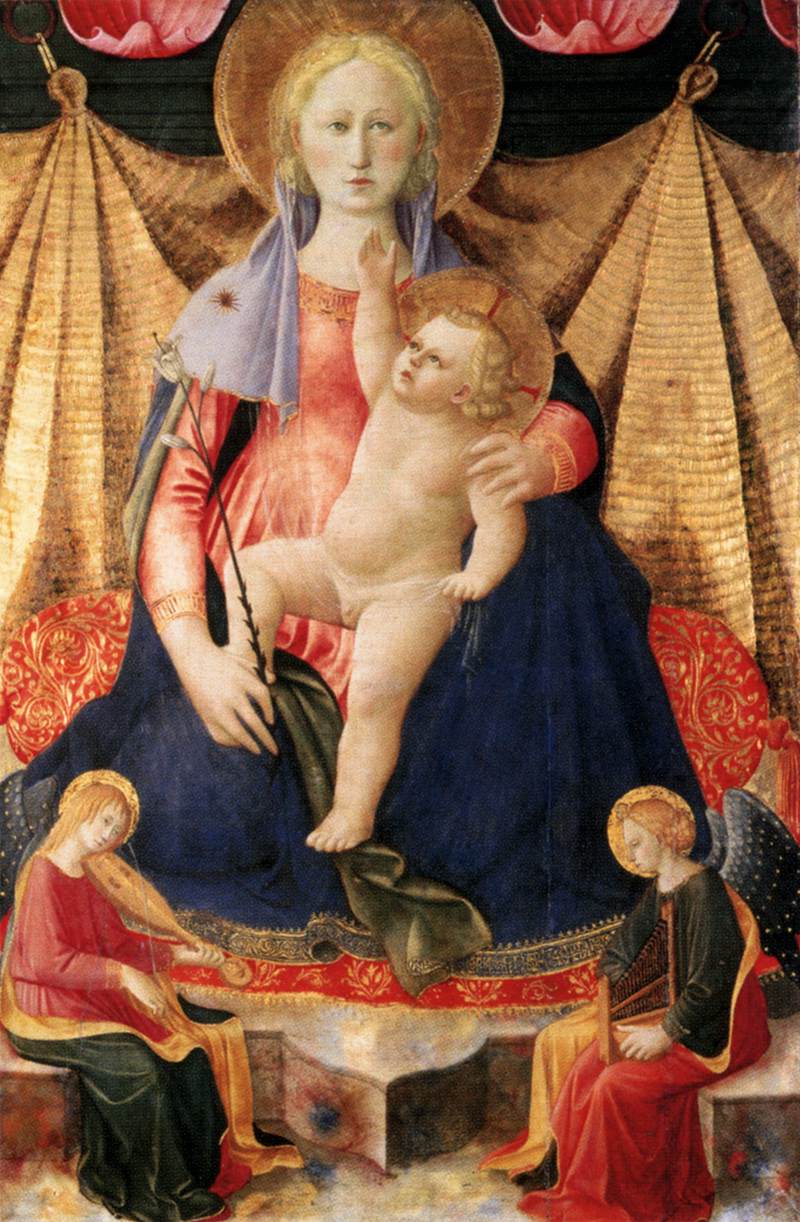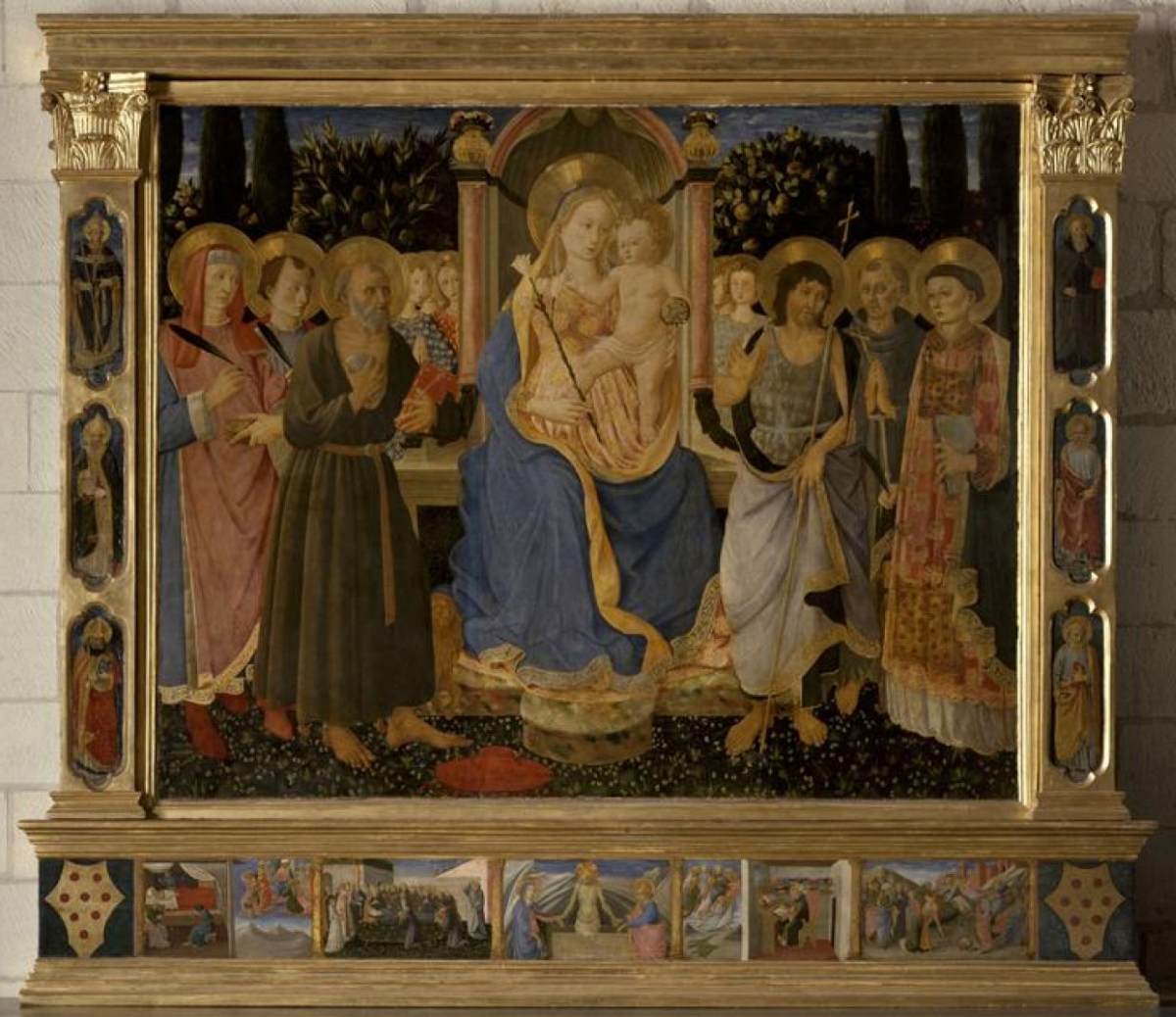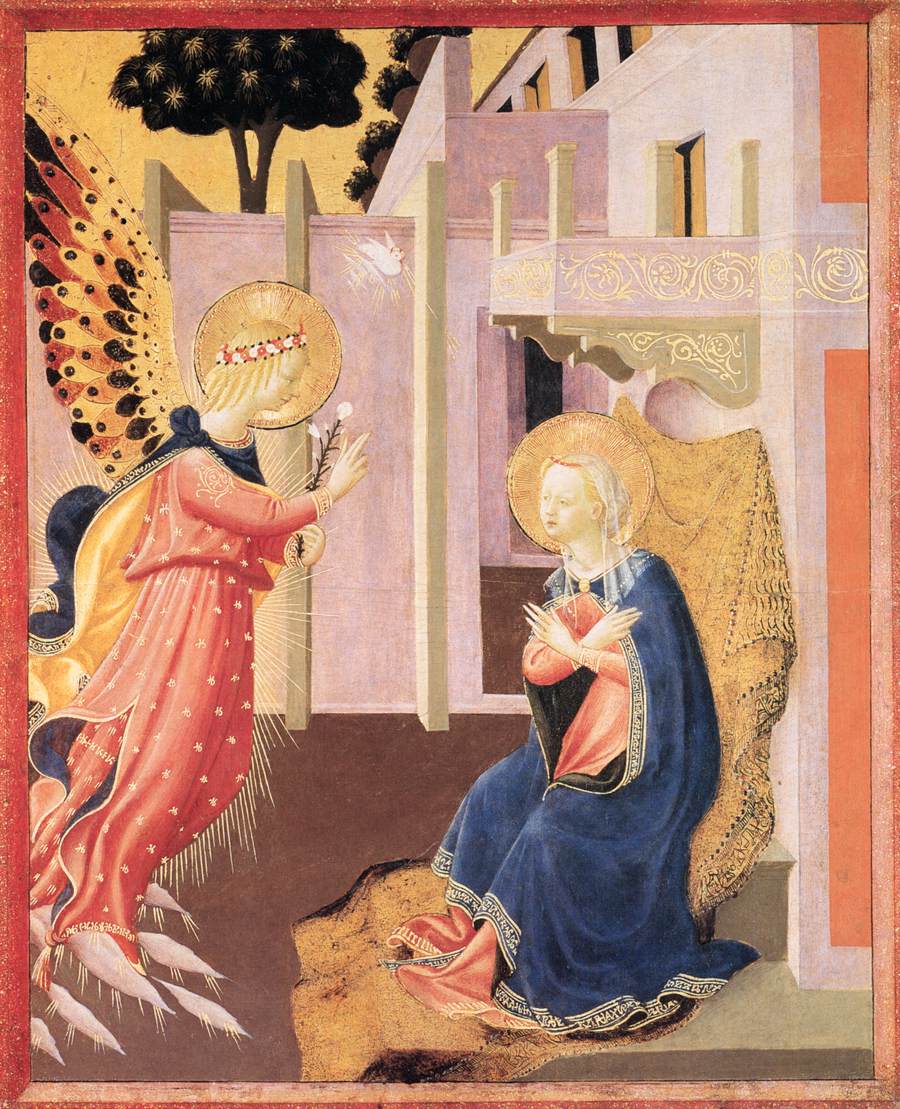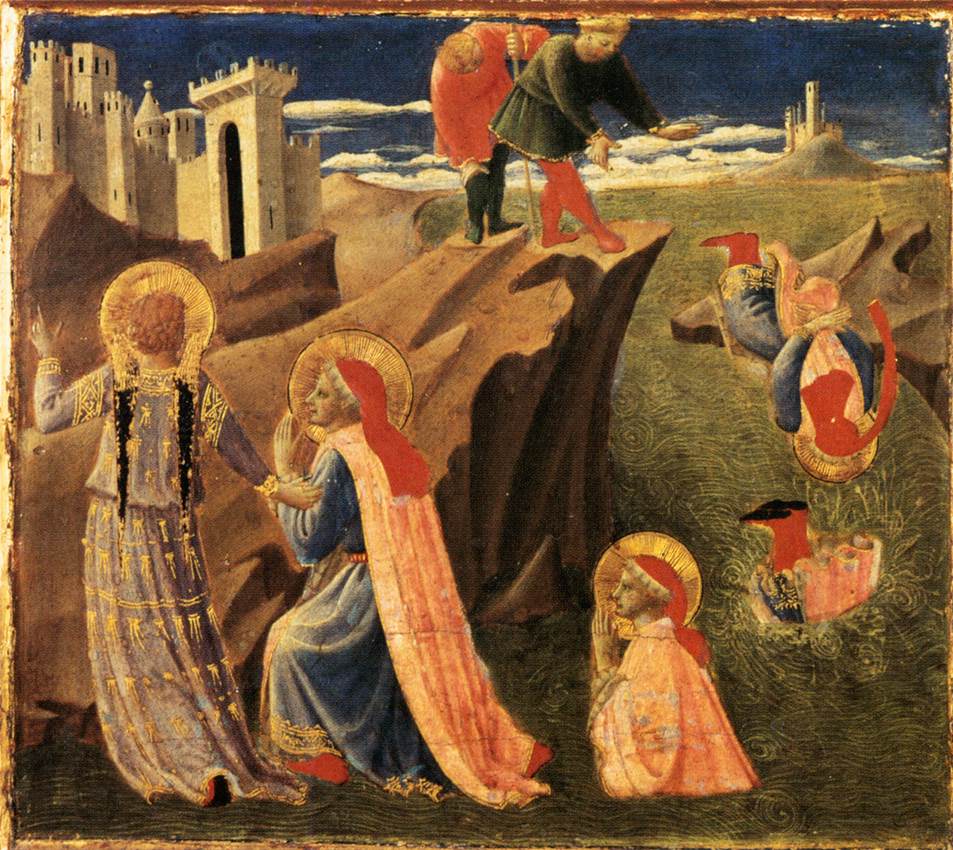The illuminator and painter Zanobi di Benedetto di Caroccio degli Strozzi was born into one of the largest and wealthiest families in Florence on 17 November 1412, although during his lifetime the Strozzi family would lose their battle for supremacy of Florence to the Medici. While Zanobi was primarily active as an illuminator, he also produced both private devotional works and altarpieces.
Zanobi, along with his older brother Francesco and sister Maddalena, were orphaned when he was fifteen. There is a lack of documentation regarding his early life, but tax records prove that between 1427 and 1430 he was living with the illuminator Battista di Biagio Sanguigni (1393-1451) in nearby Fiesole. Due to his aristocratic status, he began his training privately with Sanguigni, rather than an apprenticeship in a workshop. Sanguigni and Zanobi collaborated on several projects. The artists remained close, and in 1432 Sanguigni helped pay Maddalena’s dowry when she entered the Augustinian convent of San Gaggio. In total, the duo lived together for between eight and eleven years. Zanobi provided his tutor with financial support for another fourteen years. He also provided provisions and wine, and he even deeded the Strozzi property in Palaiuola to Sanguigni in 1446 when Zanobi moved back to Florence with his wife Nanna di Francesco Strozzi. Sanguigni continued to live in Palaiuola until his death in 1451 when the property reverted back to Zanobi’s brother, Francesco Strozzi.
Due to their close working relationship, Sanguigni and Zanobi have rather similar styles. In Fiesole, the duo connected with Fra Angelico, whom they met at San Domenico, where Fra Angelico was working at the time. In Lives, Vasari included Zanobi in the friar’s biography, claiming that Zanobi was a fervent follower.
Interestingly, due to the regulations of the Florentine guilds, an aristocrat could neither rule the city nor take an active part in politics. Consequently, Zanobi never registered with the Arte dei Medici e Speziali in Florence and was therefore unable to secure commissions under his own name; the majority of his works are collaborations.
When Zanobi arrived in Florence, he may have been a tenant in Pesellino’s workshop, as there are no documents that prove he purchased his own studio until several years later. Another possibility is that he entered some type of formal partnership with Pesellino (c.1422 – 1457). They worked on an altarpiece together, and the main panel is The Assumption of the Virgin located in the National Gallery of Art in Dublin. Scholars have proposed different ideas regarding how much each artist participated in this work. They also worked on an illumination of the Bellum Poenicum from 1446 to 1449.
Between 1446 and 1454, Zanobi collaborated with Filippo di Matteo Torelli on Cosimo de’ Medici’s commission for choir books for the church of San Marco. Fra Angelico reviewed the miniatures according to a document dated 2 May 1449. In 1460, shortly after finishing the choir books, the Medici also ordered an altarpiece for the church of San Girolamo in Fiesole, which was in proximity to their new Villa Medici. In 1463, he began another large commission to illuminate choir books for the Cattedrale di Santa Maria del Fiore. For this project, he collaborated with Francesco di Antonio del Chierico. It took eleven years to finish these works, even with the help of an entire workshop. In fact, the workshop incorporated several notable Florentine artists, including Cosimo Rosselli and Domenico Ghirlandaio.
While he worked primarily as an illuminator, he left behind several paintings. Zanobi’s only signed work is an Annunciation (c. 1440-1445) for the church of San Miniato al Monte, now housed in the National Gallery, London. The Lanfredini family commissioned this work for their private chapel in San Miniato al Monte. Zanobi depicted a traditional scene with the Virgin seated in prayer and the angel Gabriel announcing that she will bear the Son of God. Above Gabriel he placed a dove to represent the Holy Spirit, and he incorporated the lily as an emblem of the Virgin’s purity and grace. He also included the Lanfredini family arms on the capitals of the columns in the painting, and he concealed his signature, “ZANOBI,” on the border of the Virgin’s blue robe.
The Philadelphia Museum of Art also holds an Annunciation in its collection, which demonstrates Fra Angelico’s influence on Zanobi’s iconographic choices. His decision to portray the angel Gabriel flying in on clouds is unconventional, yet while working in Fiesole, he may have seen Fra Angelico’s 1425 missal depicting Gabriel in the same manner. Additionally, in 1434, Fra Angelico depicted Gabriel in pink robes in an Annunciation for the convent of Santa Maria Novella. In this work, Gabriel’s garb is a similar distinctive pink ensemble adorned with gold embroidery. The painting supports Vasari’s statement that Zanobi worked with Fra Angelico and had an impact on Zanobi’s paintings.
The artist died in his native Florence on 6 December 1468 and is buried in Santa Maria Novella. Zanobi is most remembered for his miniatures in illuminated manuscripts and is considered by some as one of the minor masters of his generation.
References:
D’Ancona, Mirella Levi. “Zanobi Strozzi Reconsidered,” La Bibliofilía 61, no.
1, 1959, pp.1-38.
Kanter, Laurence, “Battista di Biagio Sanguini and Zanobi Strozzi, ” Fra Angelico, ed. Laurence Kanter and Pia Palladino, (New York: The Metropolitan Museum of Art, 2005).
Leader, Anne, The Badia of Florence, (Bloomington: Indiana University Press, 2012).
Little, Amanda, Florentine Villas in the Fifteenth Century: An Architectural and Social History, (New York: Cambridge University Press, 2005).
Mayer Thurman, Christa C, Laurence B Kanter, Barbara Drake Boehm, Carl Brandon Strehlke, Gaudenz Freuler, and Pia Palladino, Painting And Illumination In Early Renaissance Florence, 1300-1450, (New York: The Metropolitan Museum of Art, 1995).
Pope-Hennessy, John, The Robert Lehman Collection: Vol. 4, Illuminations, (New York: The Metropolitan Museum of Art, 1997).
Strehlke, Carl Brandon, Italian Paintings 1250-1450 in The John G. Johnson Collection and The Philadelphia Museum Of Art, (University Park: Pennsylvania State Univ. Press, 2004).
Vasari, Giorgio, The Lives Of The Artists, ed. George Anthony Bull, (Harmondsworth: Penguin, 1997).
Images:
Book of Hours for the Use of Rome, c. 1445, Manuscript, 135 x 93 mm,
Walters Art Museum, Baltimore.
The Annunciation, 1440-1445, Panel, 104.5 x 142 cm, The National Gallery of London.
Madonna of Humility with Two Musician Angels, 1448-50, Panel, 84 x 57 cm, Museo Poldi Pezzoli, Milan.
St Jerome Altarpiece, 1460s, Oil on wood, 220 x 261 cm, Musée du Petit Palais, Avignon.
The Annunciation, c. 1453, Tempera and gold on panel, 37 x 30 cm, Museum of Art, Philadelphia.
Saints Cosmas and Damian Saved from Drowning, c. 1435, Tempera and gold on panel, 20 x 22 cm, Museo di San Marco, Florence.
Madonna and Child with Angels, c. 1434, Tempera and gold on panel, 138 x 127 cm, Museo di San Marco, Florence.
Gradual, 1450-55, Manuscript (Corale 3), Biblioteca Medicea Laurenziana, Florence








